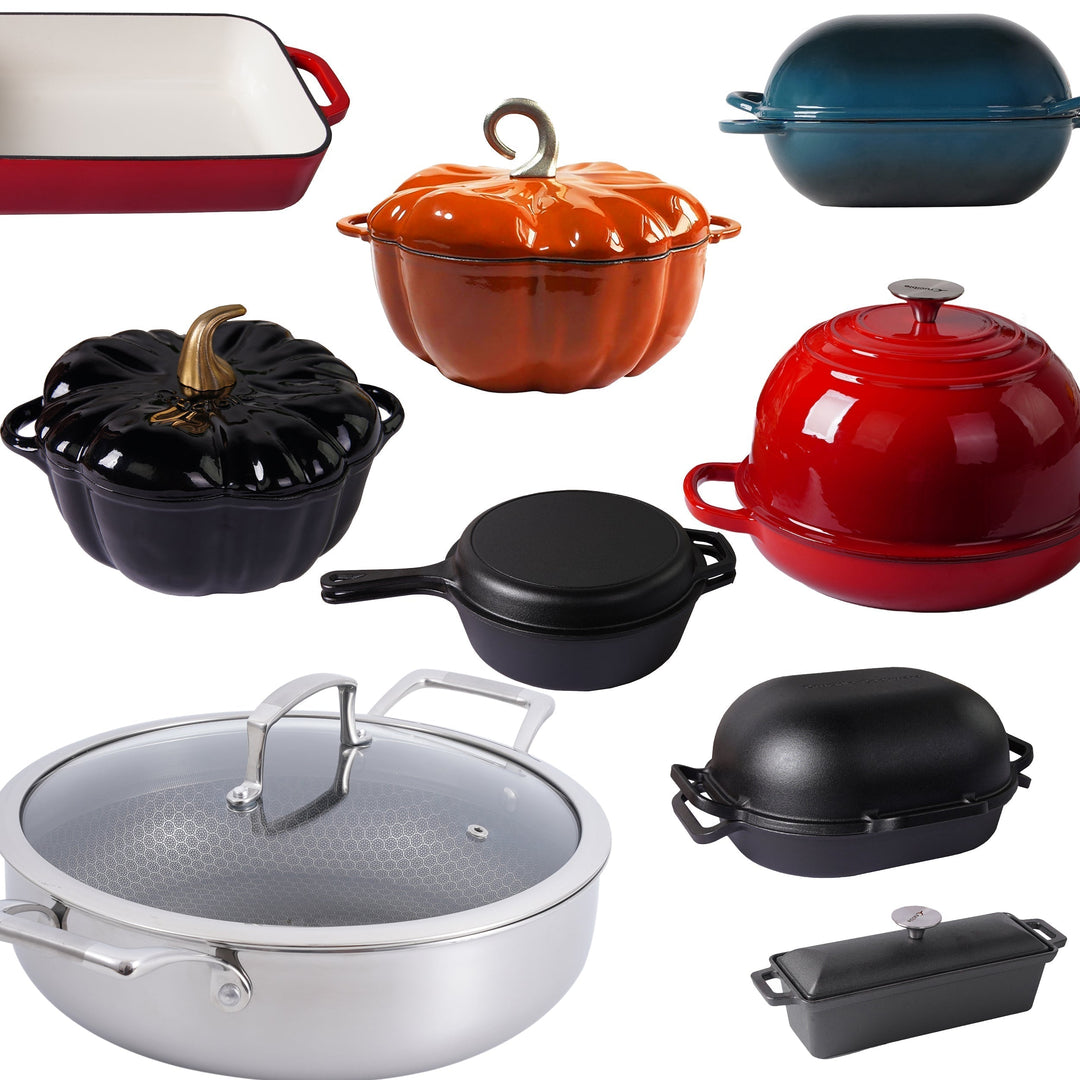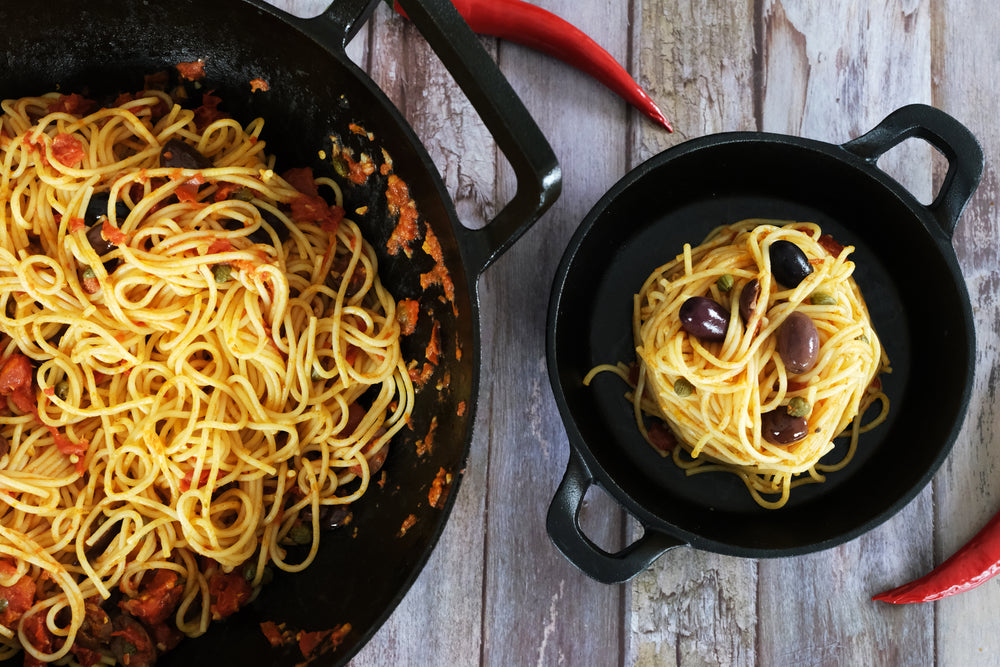الراوند: معجزة طهيّة وطبيّة وتاريخيّة

الراوند، المعروف بحموضته الزاهية وتعدد استخداماته، أسر الخيال الطهوي لقرون. هذا الخضار الرائع، الذي يُخطئ في اعتباره فاكهة، لا يقدم فقط طعمًا فريدًا بل أيضًا كنزًا من الفوائد الصحية. دعونا نبدأ رحلة عبر تاريخه، نموه، مذاقه، استخداماته الطبية، إمكانياته الطهوية، وأفضل ممارسات التخزين.
تاريخ الراوند: ساق عبر الزمن
يُعتقد أن الراوند (Rheum rhabarbarum) نشأ في الصين، وتحديدًا في مناطق سيبيريا ومنغوليا. تشير الأدلة التاريخية والنباتية إلى أن الراوند قد استُخدم في الطب الصيني لآلاف السنين.
يمكن تتبع أقدم سجلات استخدام الراوند إلى الصين القديمة، حيث تم استخدام جذور ودرنات النبات لخصائصها الطبية. كان الراوند يُستخدم بشكل أساسي كملين ولعلاج مختلف أمراض الجهاز الهضمي في الطب الصيني التقليدي.
علاوة على ذلك، تم توثيق الراوند في النصوص الصينية القديمة، مثل "شينونغ بن كاو جينغ" (الكتاب العشبي لشينونغ)، وهو أحد أقدم النصوص المعروفة للمواد الطبية الصينية التي تعود إلى حوالي 200-300 قبل الميلاد. ذكر هذا النص الخصائص الطبية للراوند واستخدامه في الطب الصيني التقليدي.
مع مرور الوقت، انتشر على طول طرق التجارة ووصل إلى أوروبا، حيث اكتسب شعبية للاستخدامات الطبية والطهي. لقد شكلت رحلته عبر التاريخ وجوده العالمي اليوم.

نمو وحصاد الراوند
الراوند، وهو خضار موسمي بارد، يزدهر في المناطق المعتدلة ذات التربة جيدة التصريف والكثير من ضوء الشمس. يتم التكاثر من خلال تقسيم الجذور أو زراعة التيجان. يبدأ الحصاد في أواخر الربيع إلى أوائل الصيف عندما تكون السيقان صلبة وسميكة وذات لون زاهي، مما يوفر محصولًا وفيرًا للمغامرات الطهوية.


الطعم الفريد للراوند والتوليفات المثالية
يُحتفى بالراوند لنكهته المميزة والحامضة، التي تتحول عند الطهي والتحلية. التوازن بين الحموضة والحلاوة الطفيفة يجعله مثاليًا للعديد من التطبيقات الطهوية. اقترن الراوند بالفواكه الحلوة مثل الفراولة، التوابل مثل القرفة والزنجبيل، والمحليات مثل السكر أو العسل لرفع نكهته وابتكار أطباق شهية.
يمكن للأعشاب والتوابل أن تكمل حموضة الراوند وتضيف عمقًا من النكهة إلى أطباقك. إليك بعض الأعشاب التي تتناسب جيدًا مع الراوند:
-
الزنجبيل: النكهات الحارة والعطرية للزنجبيل تكمل حموضة الراوند، خاصة في المربيات، الصلصات، والحلويات.
-
القرفة: تضيف القرفة دفئًا ولمسة من الحلاوة إلى الأطباق المعتمدة على الراوند، مما يجعلها مناسبة تمامًا للفطائر، الكريسبي، والكومبوت.
-
الفانيليا: النكهات الحلوة والزهرية للفانيليا يمكن أن توازن حموضة الراوند، معززة نكهته في الفطائر، الصلصات، والمخبوزات.
-
النعناع: يمكن لأوراق النعناع الطازجة أن توفر عنصرًا منعشًا وعطريًا عند اقترانها بالراوند في السلطات، المشروبات، أو كومبوت الفواكه.
-
زعتر الليمون: يكمل زعتر الليمون الراوند بنكهاته الحمضية، مضيفًا نكهة مشرقة ومنعشة إلى المربيات، الصلصات، والكوكتيلات.
-
الخزامى: رائحة الخزامى الزهرية والحلوة قليلاً يمكن أن تكون إضافة فريدة إلى الحلويات المعتمدة على الراوند مثل المربيات، الكريسبي، أو الآيس كريم.
-
إكليل الجبل: نكهة إكليل الجبل الصنوبرية والعشبية يمكن أن تضيف تعقيدًا إلى الراوند في الأطباق المالحة، الشاتني، أو خلطات الخضروات المشوية.
- قشر البرتقال: النكهات الحمضية الزاهية لقشر البرتقال يمكن أن تكمل حموضة الراوند، خاصة في الحلويات والمربيات والصلصات.
- الهيل: نكهة الهيل الدافئة والعطرية والحارة قليلاً يمكن أن تضيف عمقًا وتعقيدًا إلى حلويات الراوند مثل الفطائر والكريمبل.
جرب هذه التوليفات من الأعشاب والتوابل للعثور على التركيبات التي تناسب تفضيلات ذوقك والطبق المحدد الذي تحضره. سواء كان حلوًا أو مالحًا، يمكن لإضافة الأعشاب أن ترفع من الطعم العام ورائحة إبداعات الراوند الخاصة بك.

الفوائد الصحية للراوند
بعيدًا عن طعمه اللذيذ، يقدم الراوند العديد من الفوائد الصحية:
غني بالمغذيات: مليء بالمغذيات الأساسية مثل فيتامين ك، فيتامين ج، الكالسيوم، البوتاسيوم، والألياف الغذائية، يدعم الراوند الصحة العامة والرفاهية.
Digestive Health: The fiber content in rhubarb aids digestion, promoting regular bowel movements and potentially relieving constipation.
Antioxidant Properties: Rhubarb contains antioxidants such as anthocyanins and polyphenols, which neutralize harmful free radicals and reduce the risk of chronic diseases.
Potential Anti-Inflammatory Effects: Studies suggest that compounds in rhubarb may have anti-inflammatory properties, which could be beneficial in managing inflammatory conditions.
Blood Sugar Management: Rhubarb may assist in blood sugar regulation due to its fiber content and potential to improve insulin sensitivity.

الطهي بالراوند: مغامرة طهوية
افتح الإمكانيات الطهوية للراوند مع هذه الأطباق اللذيذة:
Rhubarb Pie: Combine rhubarb with sugar and other fruits for a classic pie that's both tart and sweet.
Rhubarb Sauce: Stew rhubarb to create a versatile sauce, perfect as a topping or a complement to meats.
Rhubarb Crisp: Pair tart rhubarb with a sweet, crumbly oat topping for a comforting dessert.
Rhubarb Compote: Simmer rhubarb with sugar and spices to create a delightful compote for various dishes.
Rhubarb Smoothies: Blend rhubarb with other fruits and vegetables for a nutritious and refreshing smoothie.

تخزين الراوند للحفاظ على النضارة
للحفاظ على نضارة الراوند:
Refrigeration: Wrap fresh rhubarb in a damp paper towel, place in a plastic bag, and store in the refrigerator for up to a week.
Freezing: Chop rhubarb into small pieces and freeze for long-term storage, allowing its use throughout the year.
Canning: Preserve rhubarb by canning it into jams, sauces, or compotes for extended shelf life.

الراوند، بتاريخها الغني، وطعمها الفريد، وفوائدها الصحية، تقف كشهادة على عجائب الطبيعة. احتضن إمكانيات هذه الخضروات الرائعة، ودعها تثير براعم تذوقك بينما تساهم في صحتك العامة. طهي سعيد واستمتع ببهجة الراوند!
















اترك تعليقًا